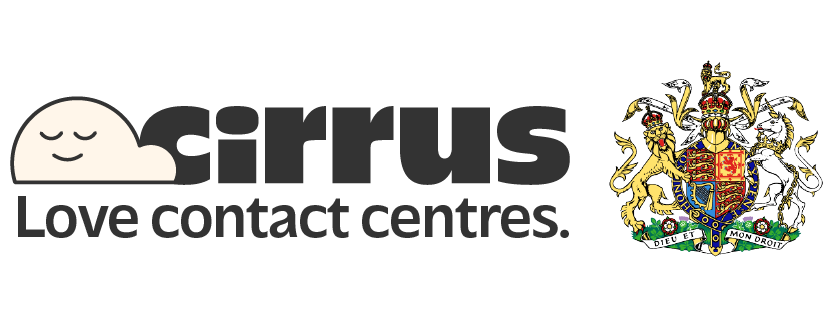What is text-to-speech technology?
Text-to-speech, often shortened to TTS, is a type of speech synthesis technology that converts written text into audio output. It plays a growing role in contact centres by automating responses, reducing agent workload, and improving accessibility for customers.
The technology delivers natural-sounding speech that mimics human speech. This makes the audio message more pleasant for customers and helps centres manage customer calls more efficiently, especially when handling routine tasks or outbound communication.
How call centres use text-to-speech
Call centres rely on TTS for several practical uses:
- Managing incoming calls with consistent welcome messages helps ensure every customer interaction begins with a clear, professional tone while reducing human intervention.
- Sharing appointment reminders or updates on recorded customer calls allows for quick delivery of important information through automated voice outputs.
- Enhancing self-service options to reduce workload on agents helps free up staff for complex tasks while improving the speed of responses for routine interactions.
- Supporting a personalised experience for diverse customer bases allows messages to reflect the customer’s preferred language, tone, and previous interactions, improving satisfaction and engagement.
In industries such as housing or retail, it allows for fast, low-latency voices to keep up with daily customer expectations.
TTS also improves workforce optimisation by automating repetitive tasks and helping agents focus on specialised customer queries.
Key features of a text-to-speech converter
When choosing a speech software for contact centre use, some key features to look for include:
- Speech Technology compatibility: ensures seamless integration with modern applications and supports natural voice generation across different systems
- Human-like speech: supports natural voice and human voice quality
- Custom Voice options: ensures audio content reflects your brand
- Multiple language options: helps overcome language barriers and allows communication in the customer’s preferred language
- Speech API support: enables integration with centre systems and customer service chatbots
- Real-time audio output: delivers messages with low latency
This functionality is especially useful for CRM integrations and automated customer notifications. It also supports smoother workflows within contact centres, aiming to scale their audio content delivery without adding complexity.
Can it be integrated into my existing contact centre software?
Integration is simple. TTS platforms are built to connect with tools like AI-enabled contact centre environments and modern business communication systems. These setups often include voice-controlled devices, voice dictation, or speech commands.
Solutions can also work alongside Microsoft Teams integration, secure payments, and VoC insights to deliver secure, intelligent voice outputs.
Benefits of using text-to-speech in contact centres
TTS offers a host of benefits that impact both customer experience and operational efficiency:
- Enables natural human-sounding speech for happier customers, helping deliver consistent audio messages that feel more personal and improve overall satisfaction across customer support channels.
- Improves service quality by handling routine interactions efficiently, allowing the customer service team to focus on more complex queries that require human agents.
- Lowers operating costs and staffing costs by automating repetitive tasks and reducing the need for additional contact centre agents during peak hours or after business hours.
- Supports accessibility for customers with reading difficulties or hearing impairments, offering audio output that removes barriers and ensures every voice is heard clearly.
- Reduces agent workload and improves job satisfaction by eliminating the burden of routine tasks, leading to more fulfilling roles and better use of agent time.
In not-for-profit environments, these gains are especially valuable, offering quality customer service with fewer resources.
Does the text-to-speech solution provide real-time capabilities?
Yes. Many speech capabilities now allow for real-time message generation and playback. This is essential for delivering time-sensitive updates and creating personalised experiences based on previous interactions.
In fast-moving setups like business process outsourcers (BPOs), real-time functionality supports better customer engagement and deeper insights into customer interactions.
TTS can also be linked with AI-powered agent support to manage audio message delivery in live environments.
Text-to-speech and omnichannel strategy
TTS integrates well into omni-channel setups by enabling consistent voice outputs that match written messages, creating a seamless and unified experience across communication channels.
It helps manage voice recognition software used in self-service options and works alongside automatic speech recognition systems to route calls accurately to the correct department without delay.
In higher education, TTS ensures inclusive communication for a diverse student base by offering speech-based updates that support accessibility requirements and improve user experience.
Role in accessibility and customer inclusivity
TTS helps contact centres deliver inclusive services. It supports customers with visual impairments, language barriers, or reading difficulties by converting important information into speech. This approach enhances accessibility and ensures that all customers, regardless of their needs, receive consistent and equal support.
Tools like accessibility make this even more practical for regulated sectors, where inclusive communication is a legal and ethical requirement.
What to consider before implementing TTS
To get the best out of your speech technology investment, consider:
- Whether it delivers high-quality voice output under load, ensuring reliable performance during peak hours without degrading speech clarity or customer experience.
- How well it handles conversational flow and speech analytics, as this affects the natural flow of customer interactions and provides valuable insights from customer interactions.
- If it can support speech commands or integrate with sentiment analysis tools to enrich the user experience and generate more profound insights into customer feedback.
- Whether it includes customisation options and language settings for your audience, allowing the system to respond in the preferred language with personalised message delivery.
- How effectively it can manage content on desktop and smart home devices, offering consistent voice outputs across modern applications and voice-controlled devices.
These considerations will help your customer service team design better speech service options and enhance centre performance.
Final thought
TTS technology is transforming customer service operations by supporting real-time voice outputs, automating outbound messages, and improving accessibility. It offers businesses a scalable way to meet the growing demand for quality customer engagement without raising costs.
Whether you’re dealing with self-service, outbound messages, or multilingual support, speech synthesis technology allows you to deliver consistent, natural voice experiences at scale. For teams aiming to create an engaging experience across channels, TTS is one of today’s most popular features.
To learn how speech capabilities can elevate your service delivery, request a demo.
Your Contact Centre, Your Way
This is about you. Your customers, your team, and the service you want to deliver. If you’re ready to take your contact centre from good to extraordinary, get in touch today.


